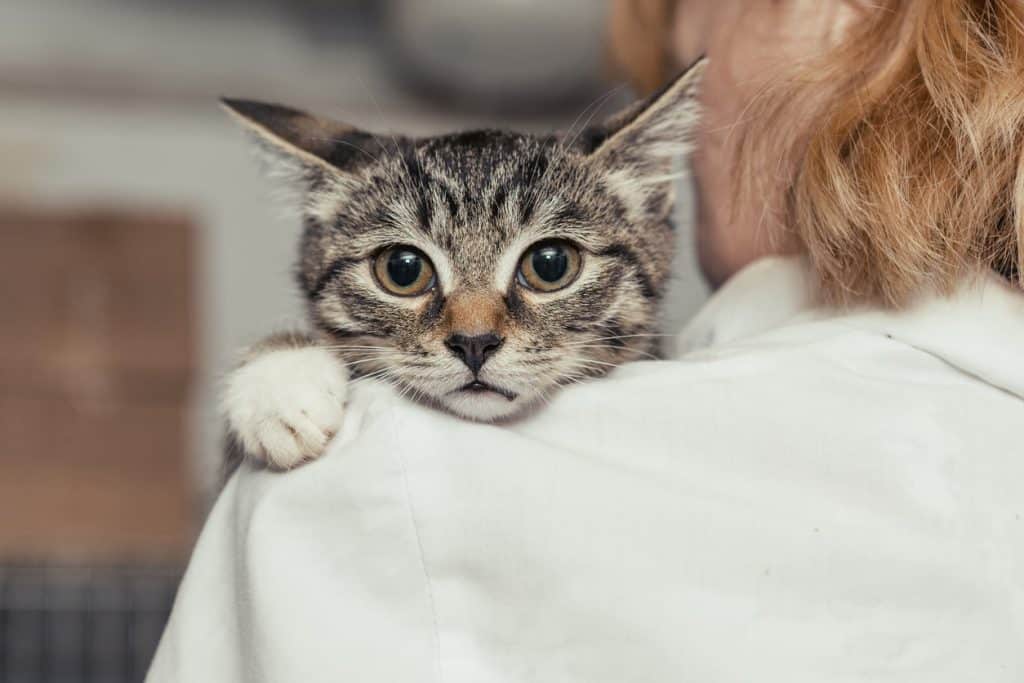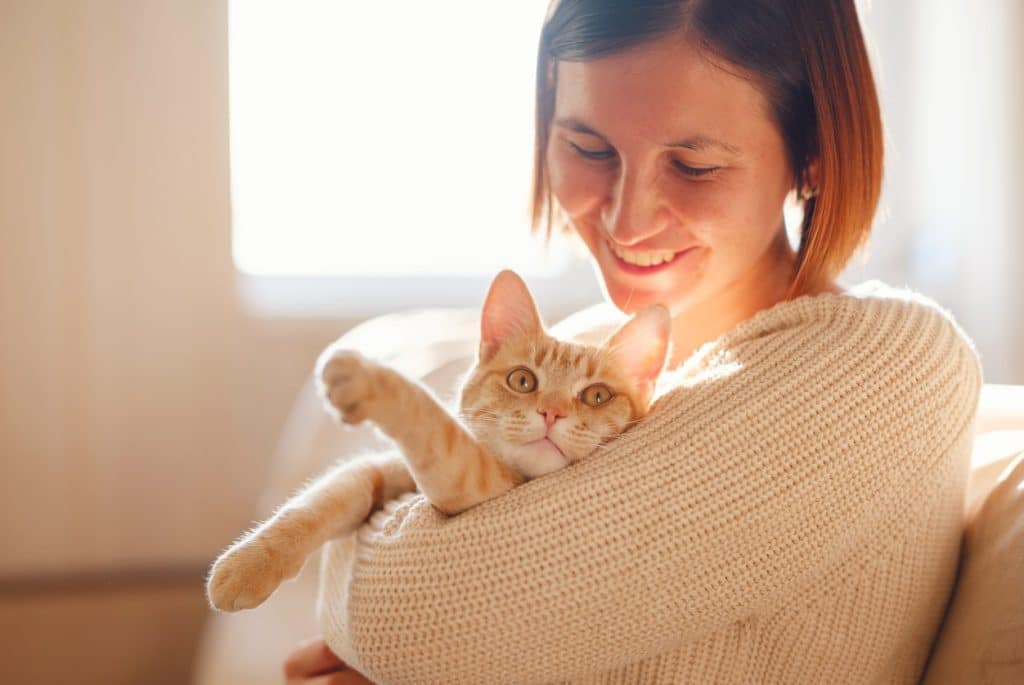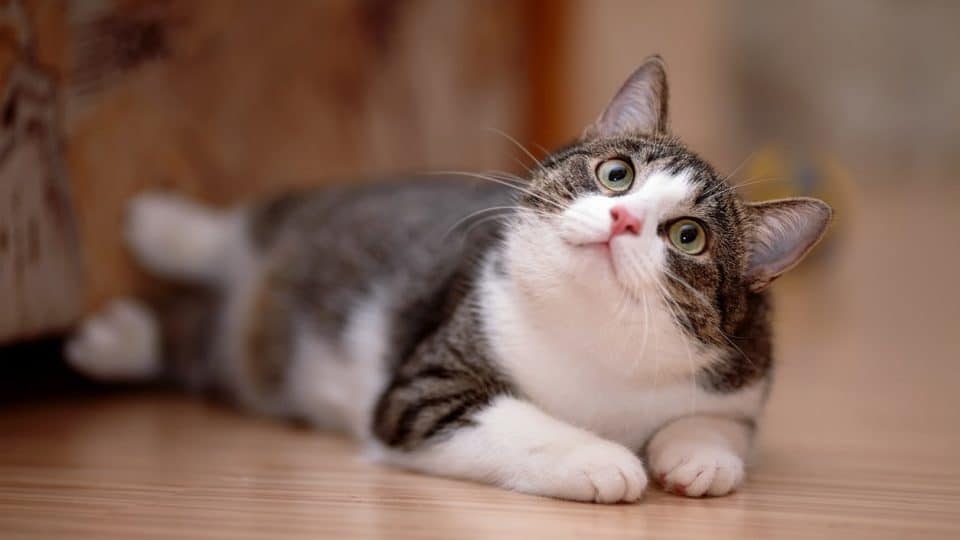Are you curious about whether your cat feels sad when you’re stuck at work late? Or maybe you’re concerned that a delayed breakfast could spark feline frustration? Cats feel and experience emotions such as happiness, excitement, and fear. They can also experience depression. But while cats do have feelings, they don’t experience them in quite the same way people do.
Cats’ feelings can be a tough topic to talk about because they’re not well understood. And anthropomorphising—attributing human qualities to animals and other non-human things—carries the risk of missing signals that more accurately explain your cat’s feelings and needs.
So how can we figure out how our cats are feeling and what they need? Read on to get the scoop.
What Feelings Do Cats Have?
Cats have lots of thoughts and lots of feelings. In fact, cats express emotions all the time! They do this through their body language, such as tail movements, ear positioning, and subtle facial expressions.
Fear or anxiety
Cats have the same hormones that play a role in the human stress response, namely cortisol and adrenaline. This suggests that they likely experience fear and anxiety in much the same way as humans do.

iStock/Okssi68
Depression
While sadness is technically a human emotion, cats can experience similar feelings. In fact, cats are known to show signs of depression and grief, says Stephen Quandt, Feline Training and Behaviour Specialist and owner of Cat Behavior Help. A change in their environment or even routine can cause feelings of depression in cats. Additionally, he says they may show signs of grief with the loss of another pet or human.
Cats are also particularly good at picking up on and mimicking their human’s emotions, which is called emotional contagion. When a cat sees that their human is sad or anxious, they may socialise with them more, and they too may express similar feelings.
Overall, changes in a cat’s behaviours can be signs of emotional distress. For example, cats who suddenly stop using the litter box, playing, or eating may feel unhappy. If you notice these sudden changes, don’t hesitate to see a vet.
Other hurt feelings
“Hurt feelings? We can’t really talk about cats experiencing hurt feelings outside of being fearful, anxious, or stressed,” Quandt says. Cats don’t have the same capacity for abstract thought as humans. So while they may experience stress, fear, or anxiety, they likely won’t dwell on those events or feel jealousy, resentment, embarrassment, or hurt feelings.
Laura Cassiday, Certified Cat Behaviour Consultant and founder of Pawsitive Vibes Cat Behavior & Training, adds that cats won’t harbour anger toward their humans or other pets, either. “Cats are never spiteful or purposefully mean,” she says.

iStock/Santiaga
Do Cats Feel Love for Us?
Quandt and other experts believe that cats can feel and express “love”. They may even see us as mother figures who provide essential care.
“Is it the same type of love that we feel? Probably not if for no other reason than there are so many other things that are different between cats and people,” he speculates.
However, there is a common link between human and cat love: oxytocin. Oxytocin is a hormone that is associated with bonding and love in humans. Research has shown that cats also release oxytocin when they interact with or even hear their human companions. This suggests that cats form strong bonds with humans, and it might feel something like love.
Of course, cats express their love differently than humans. They may rub against us, purr, or sleep on our laps. They may even give or receive kisses.
How Do Cats Show Their Feelings?
With the help of Quandt, we detailed how to translate cat communication into feelings that we can more easily understand. Keep in mind that you’ll need to consider the context of the situation, too.
| Cat Emotion | Body Language | Vocalisation |
| Happiness, relaxed, curious, friendly, or affectionate | Tail up and perhaps quivering gently, the body is soft, whiskers are forward (especially if curious or investigating), pupils normal, ears forward. | Might trill, chirp, or meow gently. |
| Depression or grief | Depressed cats may be lethargic without a medical cause, avoid eye contact, and may feign sleep. Grieving cats may appear to search for the one who is missing. | Depressed cats may be less vocal than usual. Grieving cats may meow when searching for a lost pet or person. |
| Scared, anxious, stressed, or conflicted | Hiding, cowers, covers tail, ears back, whiskers back (flat), pupils dilated, back may arch, fur may become pilo-erect (raised), spitting. | Hissing, growling, and/or yowling. |

iStock/Konstantin Aksenov
Understanding Cat and Human Body Language
We don’t know for sure if cats experience all emotions the way humans do. Cats are complex creatures with a wide range of emotions, but it is difficult to say for certain whether they experience them in the same way that humans do.
“There are differences between cats’ and humans’ brains,” explains Dr. Mikel Delgado, Certified Cat Behaviour Consultant, founder of Feline Minds, and Rover’s resident cat expert. “It’s possible that those differences would change how animals experience emotions.”
Ultimately, the best way to understand our cats’ feelings and needs is to observe their body language and vocalisations. Then, consider what they mean in the context of the situation. Avoid the mistake of assigning human emotions to our cats. While anthropomorphising is one way that people make sense of the world around us and care for the things that are different from us, it can lead us to misinterpret our cat’s needs.
“I tend to be wary of trying to interpret cats’ behaviours through a human-focused lens,” Delgado adds.
Ultimately, the best way to understand cats involves learning their individual body language and vocalisations, considering the context, and then applying that to the feelings you know cats can experience.



